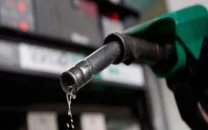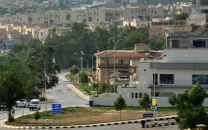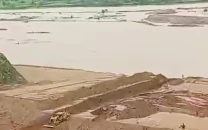Debt-for-nature swaps: turning climate liability into resilience
As rich nations fall short on Loss, Damage funding, vulnerable states see debt swaps as a path to relief, resilience

The cruelest irony of climate change is that those who did least to cause it are paying the highest price. Countries like Pakistan, Mozambique and the Philippines are battered by floods, cyclones and heatwaves, while the biggest polluters debate semantics and focus primarily on curbing future emissions rather than helping those already paying the cost of a crisis they did not create.
Increasingly, poorer nations are demanding recognition that the world's richest countries owe them a climate debt. Funding to help vulnerable nations adapt is not charity, it is a form of reparation for centuries of emissions. The creation of the Loss and Damage Fund at COP28 in 2023 marked a symbolic victory. For the first time, the principle that polluters should pay received formal recognition. Yet, nearly two years later, as COP30 unfolds in Brazil, that victory looks hollow. The fund, housed at the World Bank, has raised only a few hundred million dollars, a tiny fraction of the hundreds of billions needed each year to help developing nations recover from climate disasters.
With some major economies reluctant, such as the United States questioning its obligations and parts of Europe diverting aid budgets to military spending, the idea of debt for climate swaps has gained traction. The concept is simple. A creditor nation or financial institution cancels or restructures part of a developing country's debt in exchange for commitments to investing the freed resources in climate resilience, clean energy or nature conservation.
Yet, debt swaps are not a panacea. Besides debtor nations providing sufficient space to indebted nations to effectively contend with climate threats, the debtor country needs to have strong institutions to deliver results. Accountability and transparency are crucial to ensure that resources are well spent.
Since the time that World Wildlife Fund first proposed using debt for nature swaps back in 1987, around 2.6 billion dollars were estimated to have been made available via such swaps till 2015. The climate threats which have emerged over this past decade now demand a new generation of swaps, larger in scale, tied to resilience and adaptation, and supported by multilateral oversight.
Pakistan faces a perfect storm of debt stress and climate vulnerability. Its external debt hovers near 121 billion dollars, while the 2022 floods alone caused 30 billion dollars in losses. Pakistan's climate finance needs by 2030 are estimated at 275 billion pounds, roughly 361 billion dollars, far beyond what the country can meet under its current fiscal constraints.
Recognising the urgency, Pakistan's Climate Finance Wing has identified debt for climate swaps as a key instrument to meet resilience goals. A Debt Swap Hub, being developed with UN support and expected to be launched next year, is exploring high impact investments such as flood resistant crops, improved farm drainage and expanded crop insurance. Done right, the Hub could link debt restructuring to broader ecological goals, reviving the Indus River system, restoring wetlands and expanding reforestation, delivering benefits for both communities and nature.
Debt for climate swaps could offer a bridge between financial relief and environmental action, which provides a way for vulnerable nations to turn liabilities into resilience, by transforming climate debts into opportunities for sustainable growth. In a world where the richest nations have long avoided full responsibility, mechanisms like these could shift the burden of adaptation from the powerless to those who historically caused the problem.
The challenge for Pakistan and other vulnerable nations is to demonstrate readiness and institutional capacity. Transparent governance, credible project pipelines and rigorous monitoring will determine whether these resources translate into tangible resilience on the ground.














COMMENTS
Comments are moderated and generally will be posted if they are on-topic and not abusive.
For more information, please see our Comments FAQ